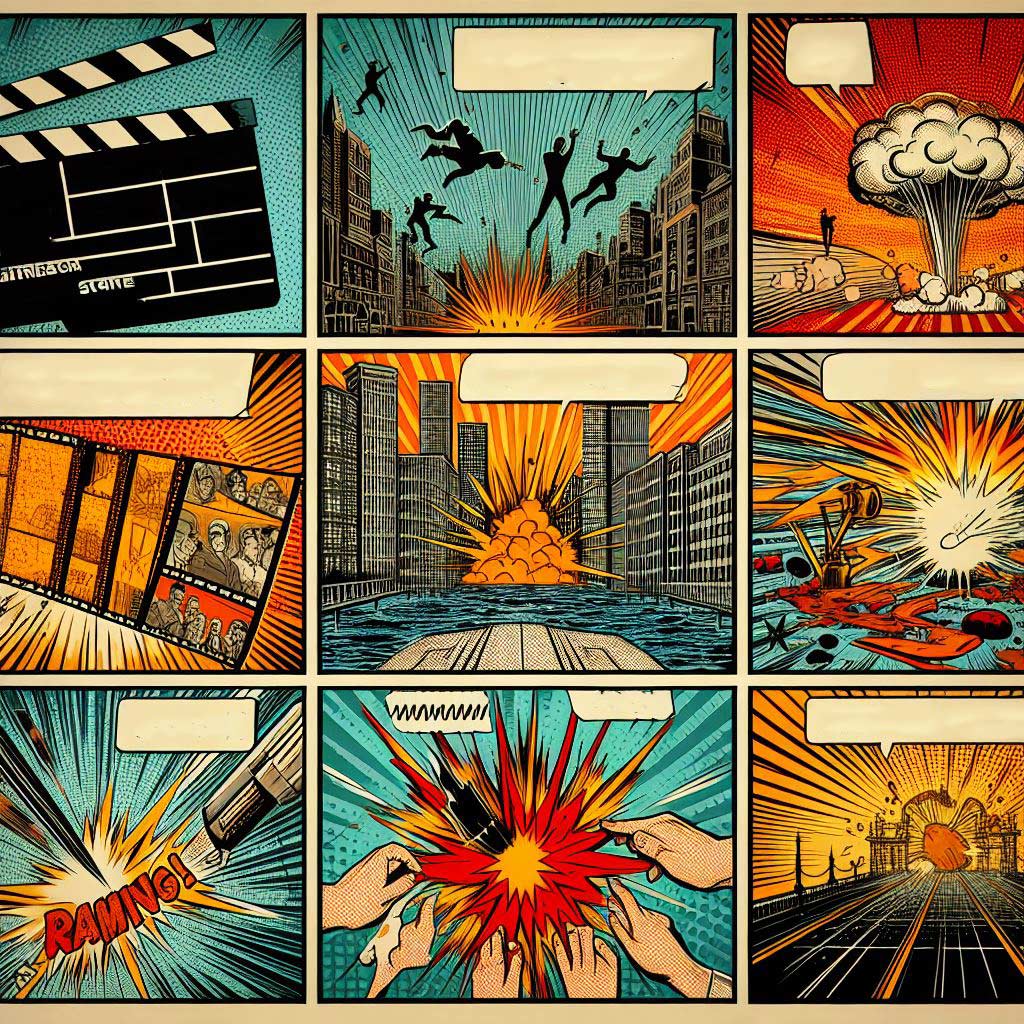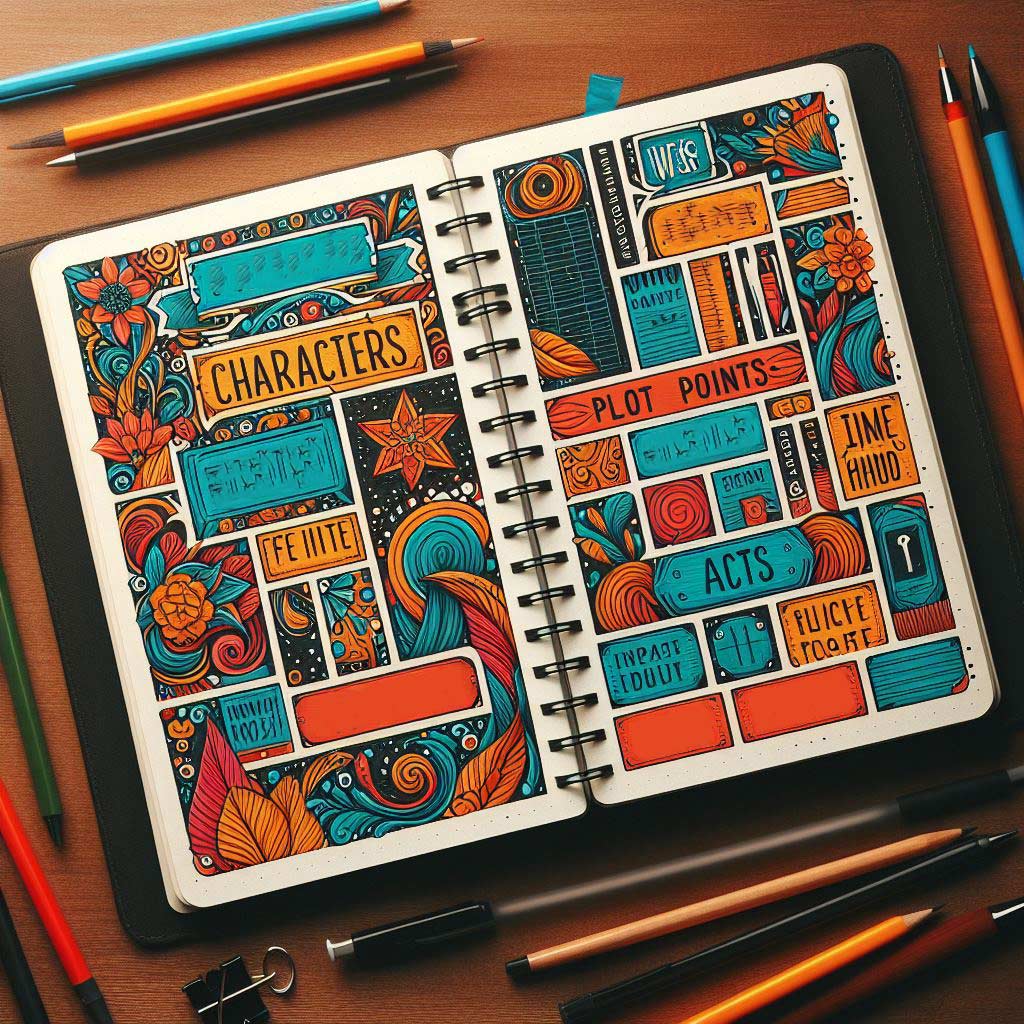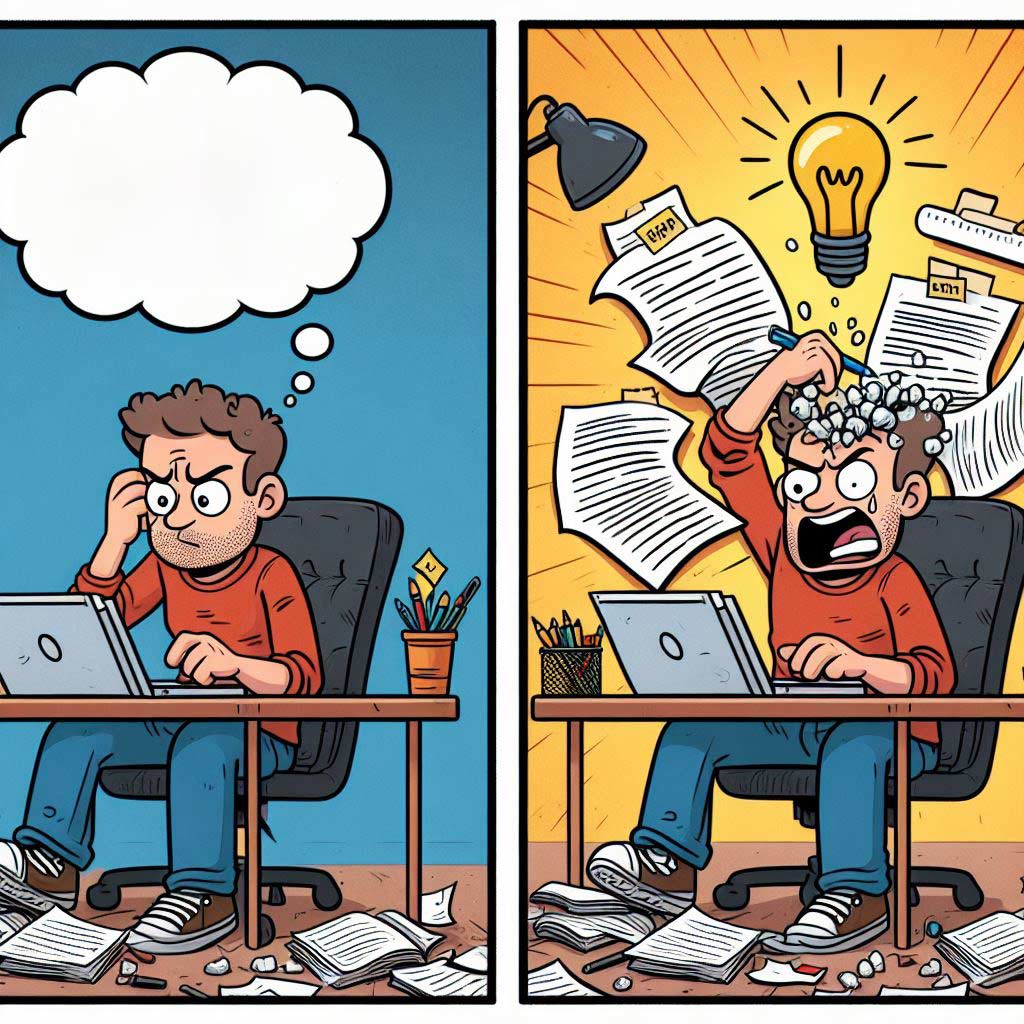If you have ever toyed around with the idea of writing a movie, play, TV show, or radio program but weren’t sure how to translate a vague premise into an actual script, the critical missing piece is likely a script outline.
A script outline acts as a middle ground that bridges the initial broad idea to the final script writing process. Without a structure and plan in place, it can be difficult to know where to begin when sitting down to produce actual scenes and dialogue.
But with a comprehensive outline guiding the ideation, story structure, character arcs, pivotal plot points, and flow ahead of time – the writing process becomes much more manageable.
Let’s dig into exactly what defines a script outline, what key elements construct an effective one, who benefits from crafting outlines, and vital tips for writing an outline that sets the vision for script success.
What is a Script Outline?
In its simplest definition, a script outline is a document that plans and summarizes all the high-level details required for outlining an idea for a script work before writing dialogue and action lines. This includes an overview of essential elements like:
- Premise and themes
- Scenes and sequencing
- Characters and their roles
- Plot points and story beats
- Structure and flow
Script outlines provide a high-level roadmap that guides the entire scriptwriting journey. Similar to how an architect may sketch plans for a new building before beginning actual construction, creating an outline allows writers to organize all the components that bring the story to life logically so they translate seamlessly from abstract ideas to words on the page.
The document acts as a critical thinking and creativity exercise that develops the full scope of vision for the script without getting bogged down in specific language just yet.
This allows for assessing whether all the integral story pieces make sense and fit together cohesively before investing significant time and effort into drafting a full script.
A script outline determines if a forest can be made out of the trees rather than trying to build each intricate tree first.
The level of detail included in an outline can range anywhere from a short one-page treatment explaining a basic narrative arc to a highly detailed 20-page document diving deep into every plot beat and character motivation.
But the ultimate goal remains bringing just enough clarity to the story so that writing flows naturally once the heavy-lifting conceptualization is complete via the outline.
What Are The Key Elements of a Script Outline?
Though script outlines can take various shapes and forms depending on the writer and the needs of the project, strong outlines often include these core components:
The Premise
A script begins with a strong basic premise – this is the seed idea that the full story will blossom out of. The premise could be a unique concept for the setting, an unusual protagonist, an intriguing relationship dynamic, a mystery to unravel, etc.
But whether for a quirky indie film or the next big-budget blockbuster, every good script starts with an idea that hooks interest and feels fresh. The premise gets to the heart of what the story is about at its core.
Themes
Beyond the basics of the premise, the dominant themes that will come through via the character journeys and plot points should also be defined.
Common themes may explore ideas like undying love, moral redemption, friendship above all else, overcoming adversity, etc. Knowing the themes allows them to be layered appropriately across scenes.
Story World
What is the setting of the movie or show? When and where does the story take place? Is it set in the streets of a major global city or a dystopian post-apocalyptic landscape? Defining the larger story world and how characters will play out their parts is critical for authenticity during scriptwriting.
Three-Act Structure
While not universally used, most script outlines incorporate the classic three-act structure that provides a narrative arc spanning exposition to climax to resolution.
The outline should identify key elements that set up the story, events that drive rising action, the major turning points, and ultimately how conflicts will resolve.

Sequence of Scenes
The outline needs to map out a logical sequence of events that happen chronologically. This involves grouping events into individual scenes with details on locations, characters involved, and scene goals, and summarizing any critical dialogue or actions – while leaving some flexibility for discovery during drafting. Identifying emotional beats across the whole script provides context.
Main Characters
No good story comes without dynamic multi-dimensional characters that audiences emotionally invest in. The script outline should introduce who the major players are, their backgrounds, personalities, flaws, and motivations. This character development lends authenticity to the eventual dialogue.

Supporting Characters
While main characters rightfully get significant time on the page – secondary supporting characters provide depth and color. The outline gives a chance to think through key supporting roles that help progress the storylines and exert influence on the main characters in small but meaningful ways.
Plot Points
These are the pivotal moments within the three narrative acts that fundamentally affect the story’s direction. Outline plot points might include inciting incidents forcing the hero on a journey, meeting a love interest who shifts perspective, difficult failures before the eventual triumph, etc. Plot points keep audiences engaged across the whole script.

Stage Directions
As the visual nature of scripts goes beyond just spoken words – setting up the physical blocking of characters within scenes provides helpful context during writing.
Outlines can summarize any major action happening such as intense fight sequences, emotional breakdowns, intimate romantic moments, and more to raise the stakes.
Starting to notice how all these disparate elements come together? An outline fuses them cohesively so writing flows.
Who Uses Script Outlines?
If that all sounds complex – that is because crafting an entertaining script full of narrative twists, empathetic characters, and themes that resonate is no easy feat. Professional writers plan scripts extensively beforehand via outlines across a range of scriptwriting disciplines:
- Screenwriters use outlines during the development process for crafting movie scripts and television shows across genres from comedy to drama to horror and more. Planning the story first in an outline supports translating ideas seamlessly to the screen.
- Playwrights and theater Creators take advantage of outlines to conceptualize staging, act structure, musical numbers, and theatrical elements that eventually get performed live on stage.

- Radio Program Writers outline everything from a hypothetical weekly science show to producing an episodic radio drama as outlines allow visualizing scenes relying purely on vocal storytelling and listener imagination.
- Animation Writers map out the vibrant fully envisioned world, characters with distinctive personalities, interconnected journeys, and pacing best brought to life through animation via outlines first.
- Video Game Writers develop intricate narratives that can dynamically adjust based on players, which requires detailed outlines accounting for branching possibilities before incorporating them into gameplay.
If you have aspirations within any of these scriptwriting domains, embracing the outline as the critical first step sets the foundation for all other creative work to shine.
Why Are Script Outlines So Beneficial?
Beyond just being commonly used by writing professionals – committing to putting together an outline ahead of launching into drafting entire scripts offers some major advantages:
- Organizes Story Vision Logically – Rather than starting with a blank page triggers writer’s block, an outline provides pre-established components to build upon so writing flows quickly.
- Catches Issues Early On – Discovering fundamental conflicts with the plot, poor pacing, inconsistent characters and more is exponentially harder once a full script draft is complete. Outlines surface problems sooner.
- Gives Direction – When in the thick of writing intimate dialogue, an outline acts as a north start reminding of the bigger picture vision when getting overwhelmed by granular details.
- Saves Significant Time – Even if requiring an upfront effort investment, outlines end up saving time overall by reducing and avoiding time sunk into writing full scripts that end up needing major overhauls due to easily avoidable issues.
- Tests Story Viability – Since scripts take so much time and creative capacity to produce, an outline offers the opportunity to experiment with story ideas without commitment. If aspects fall apart at the outlining stage, that provides valuable data to pivot approaches before investing months of dedication.
Ultimately what might seem like an incremental additional step pays untold dividends when done seriously. Too many promising ideas never get completed due to the lack of clarity and planning upfront that outlines provide.
Tips for Crafting An Effective Script Outline
If you are sold on the value of creating a script outline and committed to putting one together for your next television series idea, stage play, or indie film script – here are some best practices to incorporate:
- Know Your Ending – Experienced writers emphasize starting an outline by defining how a script will end. Whether a heartwarming happily-ever-after or Shakespearean tragedy – having the ending provides context to build appropriate plot points that organically lead there.
- Develop Complex Characters – Well-defined characters full of quirks, motivations, and interesting backstories make crafting dialogue a breeze. Use the outline to go beyond tropes to multi-dimensional relatable characters.
- Create Tension – Identify sources of tension between characters as well as internal conflicts they must grapple with to create intrigue and stakes that build across the script to keep engaging.
- Have Plants and Payoffs – Good scripts often foreshadow important events subtly before they happen to lay the groundwork. Outlines help plan out the timing of when to plant and eventually deliver on payoffs.
- Check Logical Flow – Walk through each outlined plot point to confirm the series of events flow logically while providing satisfying peaks and valleys to the overall pacing.
- Leave Room for Discovery – Avoid becoming overly attached to outline specifics, remaining flexible allows organic creativity during drafting actual page dialogue while having critical elements mapped out.
Ultimately outlines strike the perfect balance of structure and flexibility in scriptwriting. Defining too little leads to meandering aimless scripts while too much rigidity hinders the creative process.
Use these tips when conceptualizing your next outline to find the right balance for your project.
Transform Vague Ideas into Scripts with Outlines
Writing an entertaining compelling script that keeps viewers or readers engaged across 90+ minutes of runtime is certainly no easy feat – but it becomes exponentially more difficult without significant planning and outlining beforehand identifying how all the intricate pieces fit together into a coherent vision.

Rather than attempting to start drafting scripts from scratch, embrace outlines as the vehicle that takes initial premise seeds and develops them into fully blossomed stories incorporating well-paced sequencing, empathetic characters, riveting plot points, and resonant themes touching the human experience at the core.
Outline on! The script of your dreams awaits.
Frequently Asked Questions
How do you outline a short script?
For a short script outline, focus on paring down to the very essence – the core characters, central conflict, and plot points that drive the narrative forward efficiently in a limited time. Define the most critical arcs and events.
How to write an outline?
Key steps are: Establish the objective/premise, research ideas/angles, organize major topics and themes in logical groups, list detailed ideas under each category, order topics and supporting facts sequentially, and continually refine the outline organization.
What is the step outline technique?
The step outline technique structures an outline by dividing each major story beat into separate numbered steps explaining what happens plot-wise within the step. This creates granular clarity on the progression.
What is the format of a script?
Scripts follow a specific format including scene headings, action descriptions, character names, and dialogue broken up for easy reading. Scene descriptions are double-spaced under scene headings. Dialogue names are centered and dialogue text is indented.
What are the 5 steps to writing an outline?
The key steps are: Choose your topic, conduct research, organize research into logical groups/categories, list detailed facts under each category, and order all information in sequence so the content should flow.
What are the 5 steps in writing a script?
The 5 script writing steps are: Conceptualize the premise/characters, outline major story beats and plot points, write a treatment/synopsis summarizing scenes, write the actual script dialogue/action, and review and rewrite drafts to refine storytelling.
What is an outline and example?
An outline is an organizational document structure that includes labeled categories and supporting facts or details under each category relevant to that overarching topic. An example is an outline for writing an essay with Roman numeral sections and lettered facts under each section.
What are the two ways to write an outline?
The two main ways are the Alphanumeric outline which uses Roman numerals, letters, and numbers to organize facts. The Decimal outline similarly organizes information in a nested numerical format for clear segmentation of ideas.
How do you start an outline sentence?
Ways to effectively start outline sentences include: Using a keyword/phrase from the main heading, mentioning the specific fact/detail to be expanded on, briefly establishing context about the detail’s significance, or directly stating the supporting detail.


